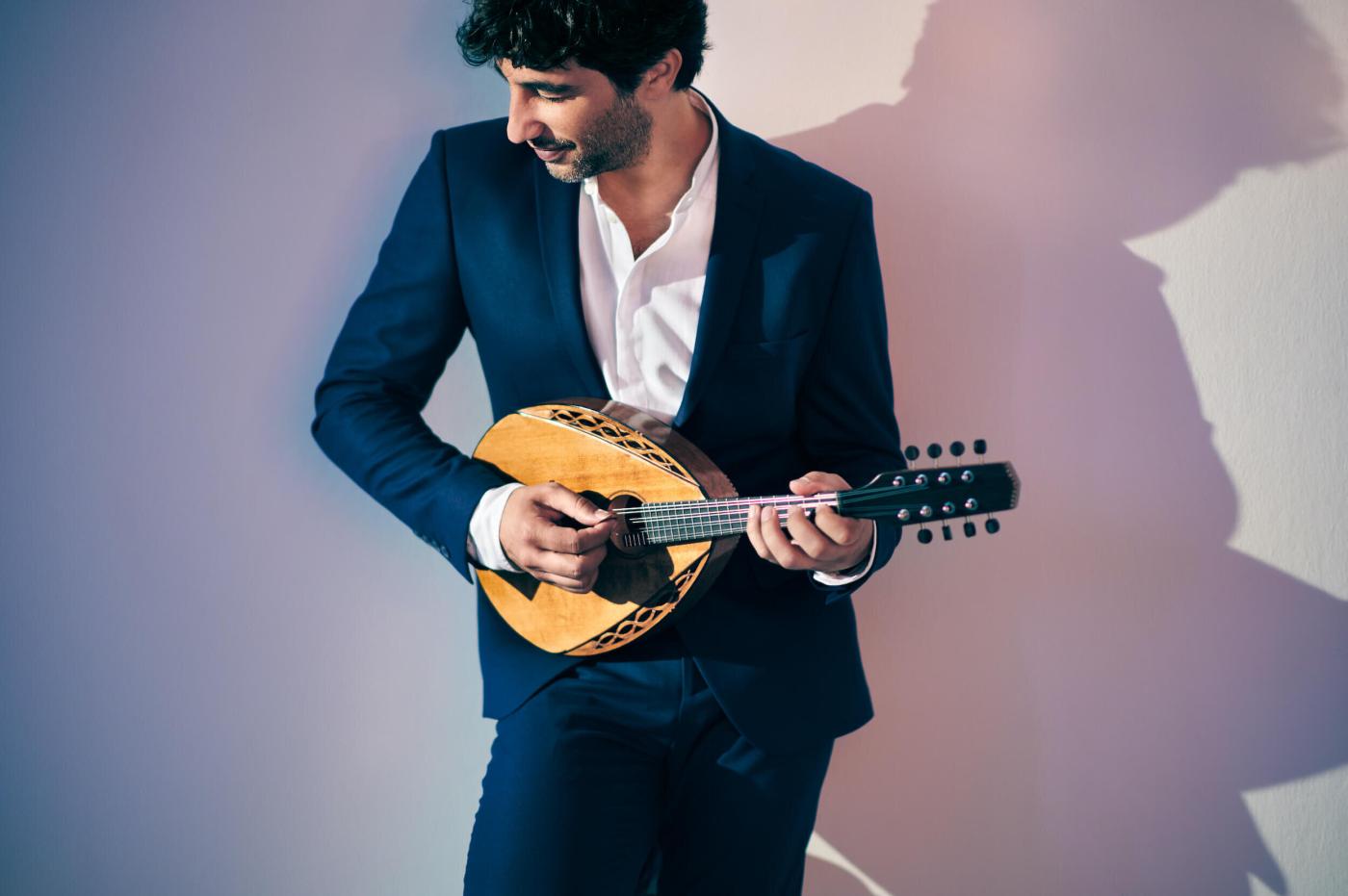This Saturday evening at Sixth & I, Washington Performing Arts presents two virtuosos shaping how the world views their instruments! Avi Avital, mandolin, and Hanzhi Wang, accordion give a concert of technical fireworks and passion in works that didn’t even originally include those instruments.
Some already know this, but I love the mandolin and even had one for a while before selling it (it turns out I’m better at listening to it than playing it). But I wouldn’t have even attempted that if it wasn’t for the eye-opening recordings of Avi Avital that turned me onto the instrument. This concert is a great opportunity to hear this instrument (and the accordion) in a way you haven’t heard before, in the hands of one of today’s leading mandolin players.
Avi Avital graciously took some time while on tour to answer a few questions.
John Banther: You have been working to restore the mandolin’s presence in classical music for a decade, and it certainly grabbed (and held) my attention with your stellar 2015 album featuring music by Antonio Vivaldi. How do you view that mission today, and has it evolved?
Avi Avital: I believe that the mandolin is currently experiencing a renaissance similar to what the classical guitar underwent about a century ago. Before that, both the guitar and the mandolin were primarily considered amateur instruments rather than concert stage instruments. Just as guitar virtuosos like Andres Segovia and Julian Bream transcended these boundaries, encouraged contemporary composers to craft a quality repertoire for the guitar, and performed their adaptations of classical music masterpieces by composers like Bach, I drew much inspiration from their approach. Today, I feel that the mandolin has been fully embraced in the leading concert halls, with its repertoire now featuring works by some of the most influential living composers of our time.
JB: The repertoire for this performance is striking! Several dance works, technical fireworks, and the beloved Chaconne from JS Bach’s Partita No. 2 in d minor, among others. How did you decide on the repertoire, and what is, if anything, different from playing this music with accordion (Hanzhi Wang) instead of piano or orchestra?
AA: Both the mandolin and the accordion share a unique characteristic. They are considered "classical music" instruments, yet they are closely associated with traditional and folk music from various cultures. The mandolin, for instance, is the signature sound of bluegrass, Brazilian Choro, Neapolitan music, Irish music, and more, while the accordion embodies the sounds of Balkan music, French musettes, Italian folklore, Argentinian tango, and beyond. In essence, both instruments, while employed in classical compositions, carry a multitude of cultural references and associations into the music they create. Our chosen repertoire reflects this idea. With the exception of Bach, all the compositions we perform draw inspiration from folk music or other genres and infuse these elements into their artistic expression.
JB: Mandolin and accordion, two instruments that have traditionally seen more popularity in Europe vs the United States. This combination isn’t something we get to experience that often, if ever! How have audiences been reacting to your performances on this US tour so far?
AA: I've found that both the mandolin and accordion are not commonly featured in concert halls worldwide. However, from my perspective, this has always been an advantage. I believe that people are naturally curious when exposed to something new, especially within the context of a traditional art form like Western classical music. When we step onto the stage, we are aware that the sound of the mandolin and accordion in this setting is a fresh experience for most of the audience. This excites us, and I hope it excites the audience as well.
JB: Some in the audience may be hearing the mandolin for the first time in a classical performance. What would you recommend to someone who wants to learn more about the instrument or hear more repertoire? (We’ll include links to your recordings, but if you have someone/teacher who was a major influence on you, or other styles of mandolin playing, lesser-known recordings, etc.)
AA: The mandolin, as I mentioned earlier, carries a familiar yet relatively unknown sound. I would recommend starting with Vivaldi – it's always a wonderful introduction to the mandolin's sounds, along with other baroque compositions. Additionally, there are exquisite contemporary pieces composed specifically for the mandolin. In my album, "Art of the Mandolin," I have exclusively included pieces that were originally written for the mandolin, spanning from the Baroque era to our times. This compilation might offer a panoramic view of the mandolin's place within the classical music canon.
PBS PASSPORT
Stream tens of thousands of hours of your PBS and local favorites with WETA+ and PBS Passport whenever and wherever you want. Catch up on a single episode or binge-watch full seasons before they air on TV.
